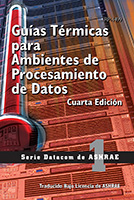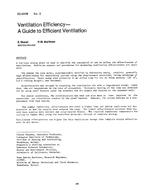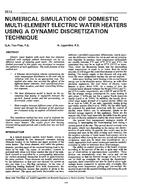This paper assesses the accuracy of the simplified frame cavity conduction/convection and radiation models presented in ISO 15099 and used in software for rating and labeling window products. Temperatures and U-factors for typical horizontal window frames with internal cavities are compared; results from computational fluid dynamics (CFD) simulations with detailed radiation modeling are used as a reference.
Four different frames were studied, two made of polyvinyl chloride (PVC) and two of aluminum. For each frame, six different simulations were performed, two with a CFD code and four with a building-component thermal-simulation tool using the finite element method (FEM). This FEM tool addresses convection using correlations from ISO 15099; it addressed radiation with either correlations from ISO 15099 or with a detailed, view-factor-based radiation model. Calculations were performed using the CFD code with and without fluid flow in the window frame cavities; the calculations without fluid flow were performed to verify that the CFD code and the building-component thermal-simulation tool produced consistent results. With the FEM code, the practice of subdividing small frame cavities was examined, in some cases not subdividing, in some cases subdividing cavities with interconnections smaller than 5 mm (ISO 15099), and in some cases subdividing cavities with interconnections smaller than 7 mm (a breakpoint that has been suggested in other studies). For the various frames, the calculated U-factors were found to be quite comparable (the maximum difference between the reference CFD simulation and the other simulations was found to be 13.2%). A maximum difference of 8.5% was found between the CFD simulation and the FEM simulation using ISO 15099 procedures. The ISO 15099 correlation works best for frames with high U-factors. For more efficient frames, the relative differences among various simulations are larger.
Temperature was also compared, at selected locations on the frames. Small differences was found in the results from model to model.
Finally, the effectiveness of the ISO cavity radiation algorithms was examined by comparing results from these algorithms to detailed radiation calculations (from both programs). Our results suggest that improvements in cavity heat transfer calculations can be obtained by using detailed radiation modeling (i.e., view-factor or ray-tracing models) and that incorporating these strategies may be more important for improving the accuracy of results than the use of CFD modeling for horizontal cavities.
Units: SI
Citation: ASHRAE Transactions, Vol. 113, pt 1, Dallas 2007
Product Details
- Published:
- 2007
- Number of Pages:
- 11
- File Size:
- 1 file , 610 KB
- Product Code(s):
- D-DA-07-017


